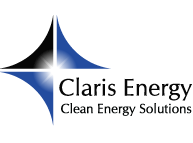 Many hotel and apartment building owners are reducing their energy usage and expenses with variable refrigerant volume systems. This new HVAC technology is currently enjoying recommendation by the HVAC industry, as well as by engineers and architects.
Many hotel and apartment building owners are reducing their energy usage and expenses with variable refrigerant volume systems. This new HVAC technology is currently enjoying recommendation by the HVAC industry, as well as by engineers and architects.
HVAC represents the largest portion of energy costs for hotel and apartment building owners. But when a VRV system is introduced, these costs can reduce annual energy costs by a minimum of 20%. In addition, total energy costs for a building can be reduced by as much as 40% when VRV technology is implemented.
These variable refrigerant volume systems or VRVs represent the highest energy efficiency of any air conditioning system used in commercial buildings. This is because a VRV allows for individual control of temperatures via room or zone, unlike traditional air conditioning units which do not.
Types of establishments benefiting most from this VRV technology include schools, hotels, apartment building and office buildings, as these are the types of locations where the ability to control temperature individually is most in demand.
For architects and engineers, VRV technology increases the flexibility of building design. But it is not only incredibly convenient; VRV technology is also the most energy-efficient solution available. As a result, those building owners who have made investments into reducing energy using VRV systems may now qualify for a number of tax incentives via the EPAct 179D.
Available Tax Incentives for Building Owners
Building owners who have installed VRV systems, whether in a new or existing location may enjoy instant tax deductions that may reach $1.80 per square foot. However, there are incentives even if a building does not qualify for this maximum.
Each major building subsystem that an owner implements can receive a deduction of up to $0.60 per square foot. These subsystems include ventilation, air conditioning and heating. In addition, the deduction may apply to the building envelope, which consists of doors, walls, roof windows, insulation and foundation.
For hotel owners, the same potential for deductions applies, which is definitely good news for an industry enjoying rapid recovery following decimation during the recent downturn. Many hotels are now implementing VRV technology as the result of previously-defined and mandatory replacement of HVAC systems.
Qualifying For the EPAct 179D Deductions
Those wishing to apply for tax deductions for VRV system implementation can pre-qualify their project prior to implementation. This will allow building owners to determine whether installation will be eligible for the deduction.
Building owners who have already installed a VRV system will require inspection of the installation by a qualified individual. This individual will survey the site and confirm the proper installation and operation of the system.
Any collected data will be assessed for the ASHRAE Standard 90.1.2001, with any savings coming from the ASHRAE database. The building owner’s compliance will be confirmed, and the building’s efficiency determined. Once the ASHRAE forms have been completed, the final report will be prepared and sent to an engineer for certification. Following an internal review, the final report is issued to the building owner.
Steve Nanos
Latest posts by Steve Nanos (see all)
- LED Lighting – A Great EPAct 179D Qualification Possibility - February 3, 2015
- 45L Credit Requirements for Begun Constructions - January 29, 2015
- Can Section 179D Incentives Help Businesses Save a Lot of Money? - January 27, 2015

 609.275.8484
609.275.8484